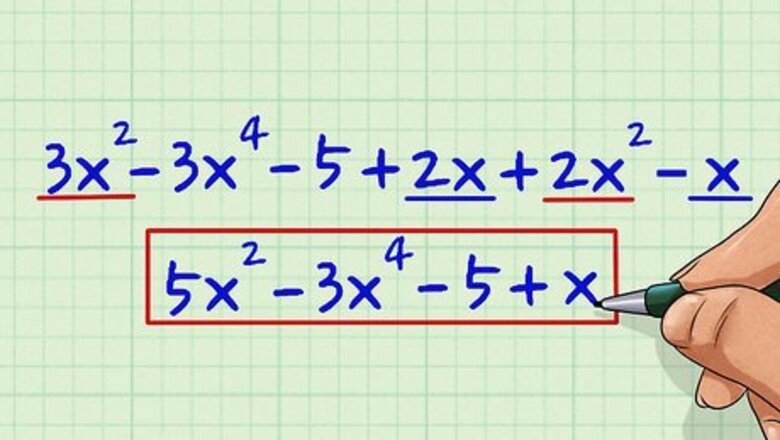
views
X
Research source
If you want to find the degree of a polynomial in a variety of situations, just follow these steps.
Polynomials with One Variable or Fewer
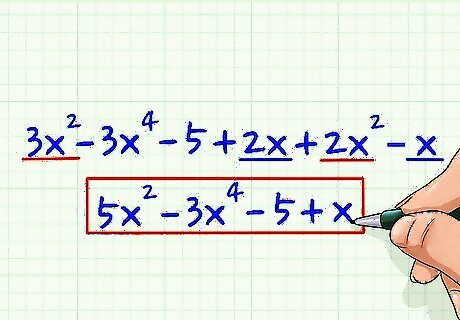
Combine like terms. Combine all of the like terms in the expression so you can simplify it, if they are not combined already. Let's say you're working with the following expression: 3x - 3x - 5 + 2x + 2x - x. Just combine all of the x, x, and constant terms of the expression to get 5x - 3x - 5 + x.
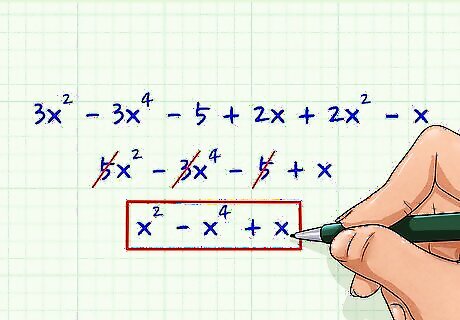
Drop all of the constants and coefficients. The constant terms are all of the terms that are not attached to a variable, such as 3 or 5. The coefficients are the terms that are attached to the variable. When you're looking for the degree of a polynomial, you can either just actively ignore these terms or cross them off. For instance, the coefficient of the term 5x would be 5. The degree is independent of the coefficients, so you don't need them. Working with the equation 5x - 3x - 5 + x, you would drop the constants and coefficients to get x - x + x.
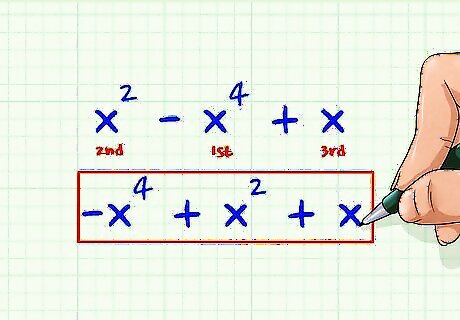
Put the terms in decreasing order of their exponents. This is also called putting the polynomial in standard form.. The term with the highest exponent should be first, and the term with the lowest exponent should be last. This will help you see which term has the exponent with the largest value. In the previous example, you would be left with -x + x + x.

Find the power of the largest term. The power is simply number in the exponent. In the example, -x + x + x, the power of the first term is 4. Since you've arranged the polynomial to put the largest exponent first, that will be where you will find the largest term.
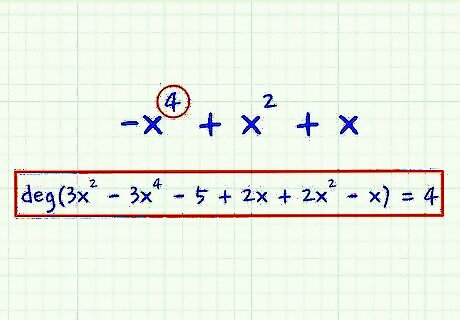
Identify this number as the degree of the polynomial. You can just write that the degree of the polynomial = 4, or you can write the answer in a more appropriate form: deg (3x - 3x - 5 + 2x + 2x - x) = 4. You're all done.
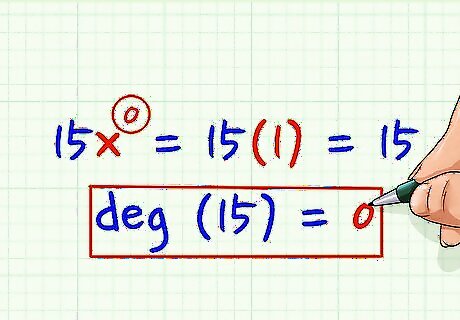
Know that the degree of a constant is zero. If your polynomial is only a constant, such as 15 or 55, then the degree of that polynomial is really zero. You can think of the constant term as being attached to a variable to the degree of 0, which is really 1. For example, if you have the constant 15, you can think of it as 15x, which is really 15 x 1, or 15. This proves that the degree of a constant is 0.
Polynomials with Multiple Variables
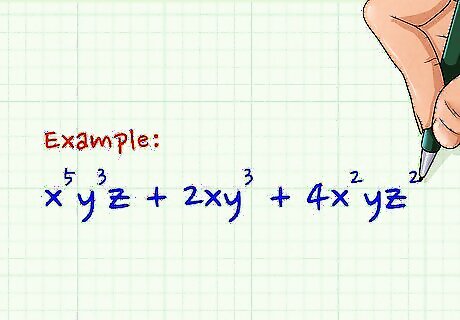
Write the expression. Finding the degree of a polynomial with multiple variables is only a little bit trickier than finding the degree of a polynomial with one variable. Let's say you're working with the following expression: xyz + 2xy + 4xyz
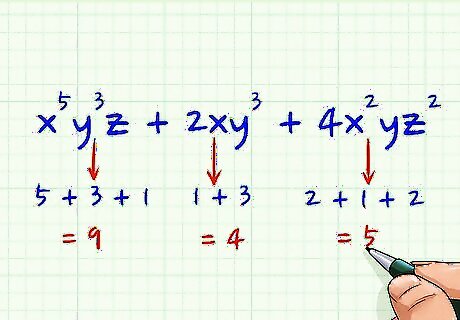
Add the degree of variables in each term. Just add up the degrees of the variables in each of the terms; it does not matter that they are different variables. Remember that the degree of a variable without a written degree, such as x or y, is just one. Here's how you do it for all three terms: deg(xyz) = 5 + 3 + 1 = 9 deg(2xy) = 1 + 3 = 4 deg(4xyz) = 2 + 1 + 2 = 5
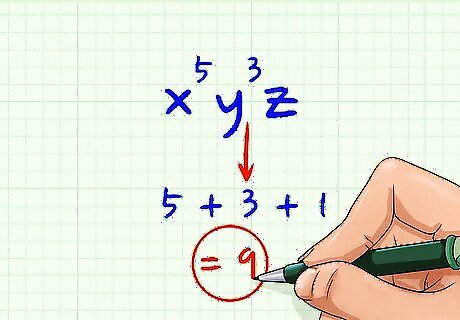
Identify the largest degree of these terms. The largest degree of these three terms is 9, the value of the added degree values of the first term.
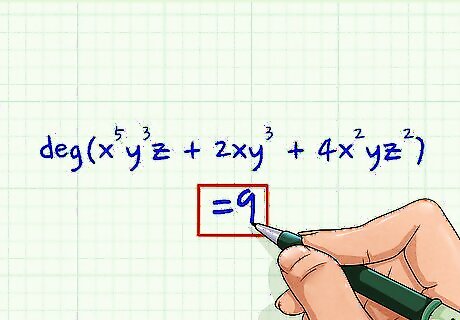
Identify this number as the degree of the polynomial. 9 is the degree of the entire polynomial. You can write the final answer like this: deg (xyz + 2xy + 4xyz) = 9.
Rational Expressions
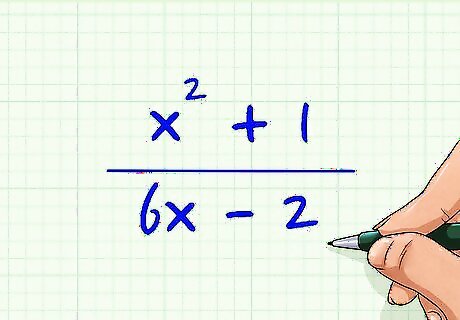
Write down the expression. Let's say you're working with the following expression: (x + 1)/(6x -2).
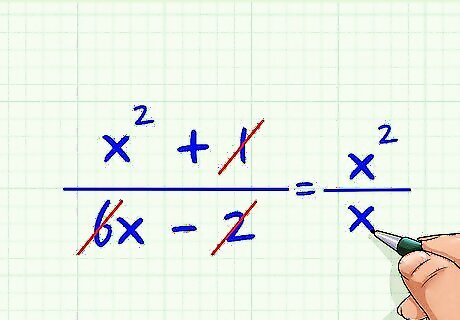
Eliminate all coefficients and constants. You won't need the coefficients or constant terms to find the degree of a polynomial with fractions. So, eliminate the 1 from the numerator and the 6 and -2 from the denominator. You're left with x/x.
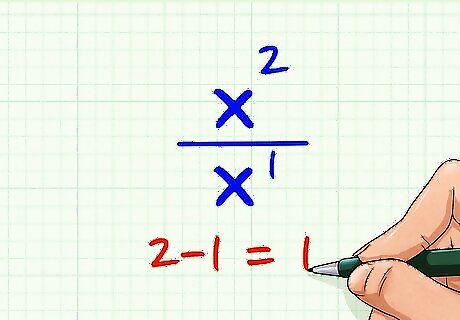
Subtract the degree of the variable in the denominator from the degree of the variable in the numerator. The degree of the variable in the numerator is 2 and the degree of the variable in the denominator is 1. So, subtract 1 from 2. 2-1 = 1.
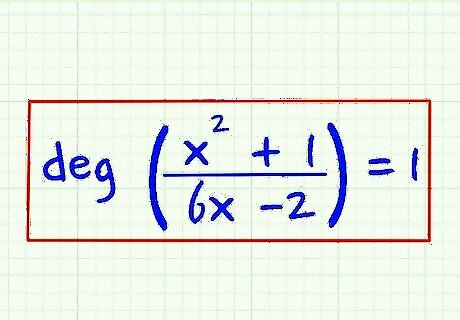
Write the result as your answer. The degree of this rational expression is 1. You can write it like this: deg [(x + 1)/(6x -2)] = 1.



















Comments
0 comment